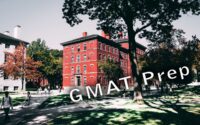GRE Quantitative Reasoning Previous Year Questions and Answers
The Free download links of GRE Quantitative Reasoning Previous Year Questions and Answers Papers enclosed below. Candidates who are going to start their preparation for the Graduate Record Examinations Quantitative Reasoning or Mathematics Previous Year papers can use these links.
Download the GRE Quantitative Reasoning Previous Year Papers PDF along with the Answers. GRE Quantitative Reasoning Previous Year Papers are updated here. A vast number of applicants are browsing on the Internet for the Graduate Record Examinations Math or Quantitative Reasoning Previous Year Question Papers & Syllabus.
For those candidates, here we are providing the links for GRE Quantitative Reasoning Previous Year Papers. Improve your knowledge by referring the GRE Quantitative Reasoning Previous Year Question papers.

Previous Year Questions and Answers on Quantitative Reasoning
Directions for questions 1 to 5: Answer the questions independently of each other.
1. in the diagram, ADEH is a rectangle. BG and CF divide the rectangle into three equal parts. HI = IG = GJ = IF = FK = KE. What is the ratio of the area of A DJK to the area of ADIH?

(a) \frac{2}{7}
(b) \frac{1}{6}
(c) \frac{1}{5}
(d) \frac{1}{8}
2. I built a time machine in 1980. The peculiar thing about the time machine was that it had a range of twenty years into the future and 30 years into the past. I used the machine and went back IS years. After spending a year in the past, I again used it and went 10 years into the future. There I spent around two years and finally went to the future by 6 years. In which year did I land up?
(a) 1980
(b) 1983
(c) 1984
(d) None of these
3. Find the area of the shaded portion, if the four circles inscribed in the square are congruent.

(a) 0.215 sq. cm
(b) 0.206 sq. cm
(c) 0.225 sq. cm
(d) 0.250 sq. cm
4. What is the value of (\frac{2}{3}+\frac{2}{15}+\frac{2}{35}+...)(\frac{1}{3}+\frac{1}{12}+\frac{1}{30}+...)
(a) \frac{n^{2}(n+3)}{(n+1)(2n+1)(n+2)}
(b) \frac{n(n+3)}{(n+1)(n+2)}
(c) \frac{n^{2}(n+3)}{(n+1)(2n+1)}
(d) None of these
5. In the parallelogram ABCD, AF = EF = \frac{1}{2}DE, AG = GB = KD, DE = 2HJ = HB.

Find A(\Delta AFG) : A(\Delta KBC)
(a) 1 : 4
(b) 1 : 8
(c) Cannot be determined
(d) None of these
Directions for questions 6 to 8: Answer the questions on the basis of the information given below.
The nth term of a Fibonacci series given by the relation: T_{n}=T_{n-1}+T_{n-2} where T1 = 1 and T2 = 1
6. The 25th term of (T25) of this series will be:
(a) odd
(b) even
(c) Cannot be determined
(d) None of these
7. If the 12th term is 144 and the 10th term is 55, then what is the 9th term?
(a) 21
(b) 34
(c) 44
(d) 47
8. The number of odd numbers is _____________ than the number of even numbers in the series.
(a) less
(b) more
(c) equal to
(d) Cannot be determined
Directions for questions 9 to 11: Answer the questions on the basis of the information given below.
a\cup b=ab; a\cap b=\frac{a}{b}; a-b=a+b; a\Delta b=a^{b}
9. What is the value of [(8\cap 4)\Delta(5\cup 2)]-[(11\Delta2)\cup (6-3)]
(a) -65
(b) -1024
(c) 2113
(d) -2013
10. Find the value of [{(12\cup 5)-(24\cap 6)}\Delta\frac{1}{6}]
(a) 3
(b) 14
(c) 2
(d) \frac{28}{3}
| Pratice Papers | Important Questions |
| Advance Questions | Previous Papers |
| Mock Test | Sample Papers |
| Typical Papers | Model Set |
11. The of \frac{(6\Delta3)-{(20\cup 5)\cap (80\cap 16)}}{(25\cap 4)-{(76\cap 38)-(2\Delta4)}} is
(a) \frac{196}{82}
(b) \frac{236}{82}
(c) 2
(d) 3
Directions for questions 12 to 17: Each question is followed by two statements, I and II. Answer each question using the following instructions:
Mark (a); if the question can be answered by using one of the statements alone, but cannot be answered using the other statement alone. .
Mark (b); if the question can be answered by using either statement alone.
Mark (c); if the question can be answered by using both statements together, but cannot be answered by using either statement alone.
Mark (d); if the question cannot be answered even by using both statements together.
12. What is the value of x?
I. x^{2} + x – 12 ≤ 0
II. x^{4} – 41x^{2} + 400 ≤ 0
13. There are four men Ankit, Ajay, Amit and Ajit married to Reshma, Ragini, Renu and Ranjani. Ankit is not married to Reshma. To whom is Amit married if he is not married to Renu?
I. Ajay is married to Ragini.
II. Amit is not married to Reshma.
14. In an intercom system of a certain office, all phone numbers consist of four digits. The manager of that office has a number which has distinct digits. What is his phone number?
I. The digits of the phone number are in A.P from left to right.
II. The product of the digits is divisible by 5 and 7. The sum of the digits is less than 19.
15. A, B, C, D who are married to P, Q, R, S are sitting opposite to each other. No one is sitting in front of their spouse. Who is sitting opposite to B?
I. A and C are married to Q and S respectively and R is sitting opposite to the only person between B and D.
II. C, B and P are sitting in corners. Q is sitting opposite to the only person between C and A.
16. The average weight of A and D is 30 kg. What is the average weight of A, B, C and D?
I. Average weight of A, B and C is 40 kg.
II. Average weight of B, C and D is \frac{100}{3}kg.
17. There are two vessels of equal volume. ‘Vessel l’ is half filled with milk and ‘Vessel 2’ is half filled with water. Some part of the liquid from ‘Vessel 1’ is transferred to ‘Vessel 2’ and then an equal amount is transferred from ‘Vessel 2’ to ‘Vessel 1‘ and finally the same amount is transferred from ‘Vessel 1’ to ‘Vessel 2’. What is the amount of liquid that is transferred each time from one vessel to the other?
I. After the final transfer the amount of milk in both the vessels is the same.
II. The volume of each of the two vessels is 10 litres.



